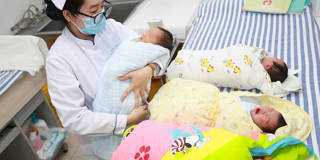
China’s Three-Child Policy Won’t Help
Alarmed by new data showing that its fertility rate is now similar to that of aging Japan, China has announced that it will permit families to have up to three children. Yet without broader reforms to address high costs of living and rural-urban divides, the new policy could make a difficult problem worse.
IRVINE – In an effort to address rapid population aging, China has just announced that it will allow all families to have up to three children. The decision comes on the heels of widely publicized new data showing that the Chinese fertility rate in 2020 was only 1.3 per woman, which is similar to that of Japan (1.36 in 2019) and notably lower than that of the United States (1.7).